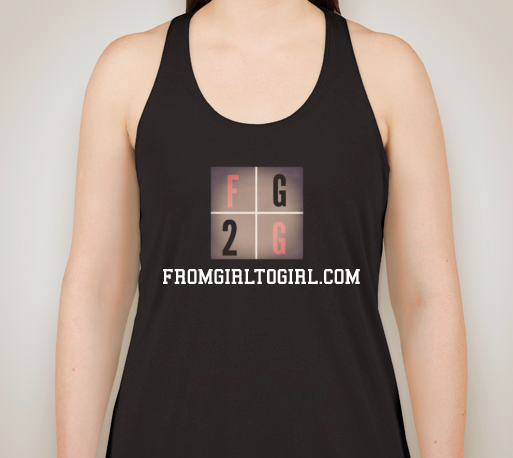During the second presidential debate on Oct. 9, candidates Donald Trump and Hillary Clinton were asked about Twitter and, specifically, their discipline in using the social media tool. “Tweeting happens to be a modern form of communication,” Trump said. “I’m not unproud of it, to be honest with you.” Twitter as a topic of discussion in a presidential debate shows how far it has come since President Barack Obama started using social media as a way to engage with voters in his 2008 presidential campaign. Eight years later, Twitter has blown up as a powerful tool for politicians to immediately get their messages across to the public and to control, and sometimes fix, their images. But as politicians turn to Twitter resource, the effect and the messaging is still unquantified, which is why in 2012, Sam Houston State University political science associate professor Heather Evans set out to examine the effect of social media in campaigning.
Evans and one of her classes started researching Twitter involvement with the U.S. House races by following all of the candidates to examine what politicians tweeted. With the current presidential election, Evans and two students are continuing this research to see if there is any gender differences in what Clinton and Trump are tweeting. The trio have been working since June to collect tweets from Clinton and Trump and plan to continue the research until election night. After four months, Evans, junior political science major Kayla Brown and senior political science major Tiffany Wimberly have discovered that Clinton’s campaign uses Twitter in a variety of ways, including tweeting about more political issues than Trump and focusing more on her opponent than he does.
“When I sat down with all this data and ran some basic statistics, the differences automatically popped out,” Evans said. “She is tweeting more than he is. She is attacking him more than he is her; he is attacking everyone, and she is not attacking anyone else except him. They are tweeting in this completely opposite way.” Evans said she was not surprised by the negativity of Clinton’s tweets.
“Clinton’s attacking nature is explained with the ‘Out Party’ hypothesis. In a book by David Karpf called ‘The Move On Effect,’ he explained how the outside party draws to any type of new media to get a leg up on their opponent,” Evans said. “The underdog attacks more to get people’s attention.”
Evans said many women running for political office use this tactic, whether they are the incumbent or are running for the first time. “I believe it is because they see themselves as outsiders,” Evans said. According to Evans, the most unexpected thing that she has found in her research is that neither Clinton nor Trump is tweeting about the issues more.
“I would think that Trump would be copying whatever Clinton is doing,” Evans said. “If she is talking about issues and he wants to be opposing her, he could talk about the same issue in a different way or take a different position. I was surprised by the lack of issue position on his page, compared to her.”
Evans said Trump’s tweets have focused on terrorism and immigration—and about 10 percent of his tweets involve criticizing the media—while Clinton has focused on “male” and “female” issues.
“‘Female issues’ are traditionally defined as issues that disproportionately affect women as a group more than men, issues like education, healthcare, welfare, abortion, domestic violence, and equality,” Evans said. “‘Male issues’ are traditionally economic in nature—taxes, budget—or foreign policy—war, terrorism. Gun control is also a ‘male issue.’”And despite all of the data that shows that Clinton is tweeting more, Trump tends to get more media attention.
“When I tell people that she is tweeting double what he is tweeting, they are all shocked,” Evans said. “They are only hearing about him. He is getting more air time than she is. She is not really getting any.” This could be because Clinton’s Twitter account is handled largely by a team, while Trump has a more active hand in his account.
“Research is showing that if you look at all the tweets he is sending, half of the tweets are from an iPhone and half on them are from an Android,” Evans said. “The tweets coming from the Android are him, and the Android tweets are those that we would define as ‘off-the-cuff,’ 3 a.m. tweets. The iPhone tweets (from his staff) are professional.”
This fall, the team has incorporated an interview treatment into their Twitter research, through which Evans hopes to find out some of the reasons Trump may be acting the way he does.
“We might be able to see if the interviewers are treating him differently, which is leading to why he is being so negative,” Evans said.
Evans said the research results might be different if Trump wasn’t running.
“He is not acting like everybody else,” Evans said. “Whereas other politicians will talk about their policy stances on multiple things that are before Congress, he is very, very different. If you go and look at Marco Rubio, or if you want to go back and grab tweets from John McCain in 2008, their tweets were very different than Trump’s.”
The work may be long and tiring, but Evans said she also finds it amusing and educational for students. It’s also of interest internationally, having been highlighted several times by the London School of Economics.
“I enjoy working with students on these projects because they get to see political science in action,” Evans said. “Students begin to make connections between what we are reading and what we are seeing on Twitter. In my research project with Tiffany and Kayla, we are pushing the discipline forward regarding the gendered use of Twitter in campaigns.
“It also is really fun research,” Evans said. “I like reading and analyzing the tweets. The students really enjoy it too.”
Highlights:
• Trump and Clinton use Twitter in “completely opposite way(s)”
• Clinton tweets more than Trump; Trump’s tweets get more attention
• Clinton attacks Trump more; Trump attacks “everyone”
• Trump focuses on terrorism, immigration and the media; Clinton focuses on both “male” and “female” issues
• Clinton’s Twitter account is handled largely by her team; Trump plays a larger role in his account
• Trump tweets with an Android; his team uses an iPhone
• Women candidates attack their opponent more via Twitter, as explained by the “Out Party” hypothesis

